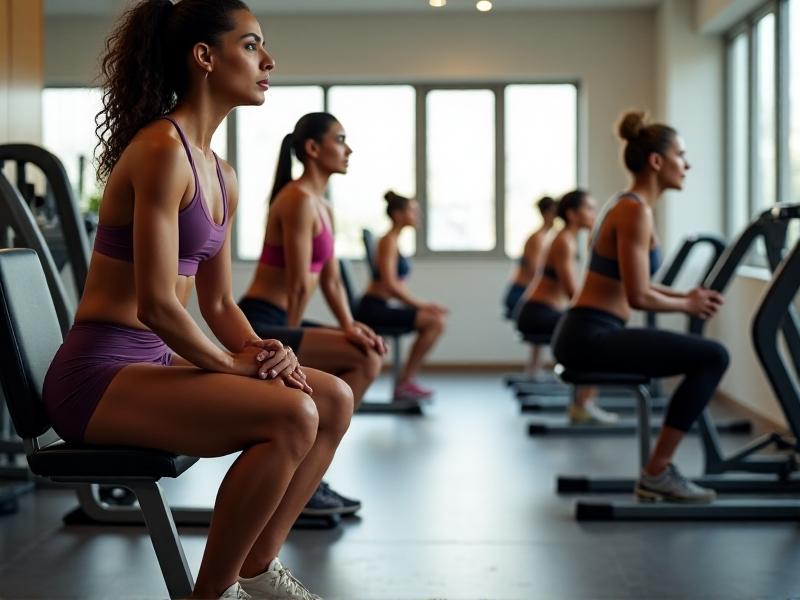Chair Squat Challenge Protocols
What Is the Chair Squat Challenge?
The Chair Squat Challenge is a structured fitness program designed to improve lower-body strength and mobility using bodyweight squats performed with a chair for support. Unlike traditional squats, this method emphasizes controlled movement, proper form, and progressive overload over a set period—typically 30 days. Participants begin by mastering the basic chair-assisted squat and gradually increase repetitions, depth, or tempo as their endurance and technique improve. The chair serves as a guide to ensure safe alignment, making it accessible for beginners or those recovering from injuries.
Benefits of the Chair Squat Challenge
This challenge strengthens major muscle groups like the quadriceps, glutes, hamstrings, and core while promoting joint health. By using the chair as a guide, participants reduce the risk of improper form, which is common in traditional squats. Over time, the movement builds functional strength for daily activities such as sitting, standing, or lifting. Additionally, the challenge enhances balance and proprioception, as the controlled descent and ascent require steady engagement of stabilizer muscles. For those with sedentary lifestyles, it counteracts the effects of prolonged sitting by improving hip and ankle mobility.

Mastering Proper Chair Squat Technique
Proper form is critical. Start by standing in front of a sturdy chair, feet hip-width apart. Lower your body slowly, aiming to lightly touch the chair seat with your glutes before rising. Keep your chest lifted, knees tracking over toes, and weight in your heels. Avoid collapsing into the chair—use it as a tactile cue rather than sitting fully. Engage your core throughout the movement to maintain spinal alignment. For beginners, reducing range of motion or placing a cushion on the chair can ease tension in tight hips or knees.

Designing Your 30-Day Protocol
A well-structured protocol balances progression with recovery. Days 1–10 focus on mastering 3 sets of 8–10 reps with a 2-second pause at the bottom. Days 11–20 introduce tempo squats (4 seconds down, 2-second hold) and increase reps to 12–15 per set. The final phase incorporates single-leg variations or added resistance, like holding a water jug. Rest days are woven in to allow muscle recovery. Adjustments are encouraged based on individual stamina—overtraining can lead to burnout or injury.

Tracking Progress Effectively
Document daily reps, sets, and how the movement feels. Use video recordings to self-assess form or share with a trainer for feedback. Metrics like time-to-fatigue or depth consistency (e.g., tapping the chair at the same height each rep) reveal subtle improvements. Mobile apps like RepCount or analog tools like journals work equally well—the key is consistency. Celebrating small wins, such as completing an extra rep or achieving deeper range of motion, fuels motivation.

Avoiding Common Injuries
Knee strain and lower back discomfort are common pitfalls. To protect joints, ensure your knees don’t jut past your toes during descent. If flexibility limits depth, elevate the chair with cushions temporarily. Listen to your body—sharp pain warrants immediate cessation. Pair squats with stretches for the hip flexors and calves to maintain elasticity. For those with existing conditions, consulting a physical therapist before starting is advisable.
Advanced Variations to Level Up
Once bodyweight squats feel effortless, add complexity. Try pulse squats (small up-and-down movements at the lowest position), staggered-stance squats, or hold a weight plate at chest level. For endurance, incorporate isometric holds—pause for 10 seconds mid-squat during each rep. These variations prevent plateaus and keep the challenge engaging.
Staying Motivated Throughout the Challenge
Partner with a friend for accountability or join online communities like the #ChairSquad hashtag on social platforms. Visual reminders—a calendar pinned to your fridge or sticky notes with encouragement—reinforce commitment. If motivation wanes, revisit your ‘why’: whether it’s lifting grandchildren pain-free or running a 5K, connecting to deeper goals reignites perseverance.








